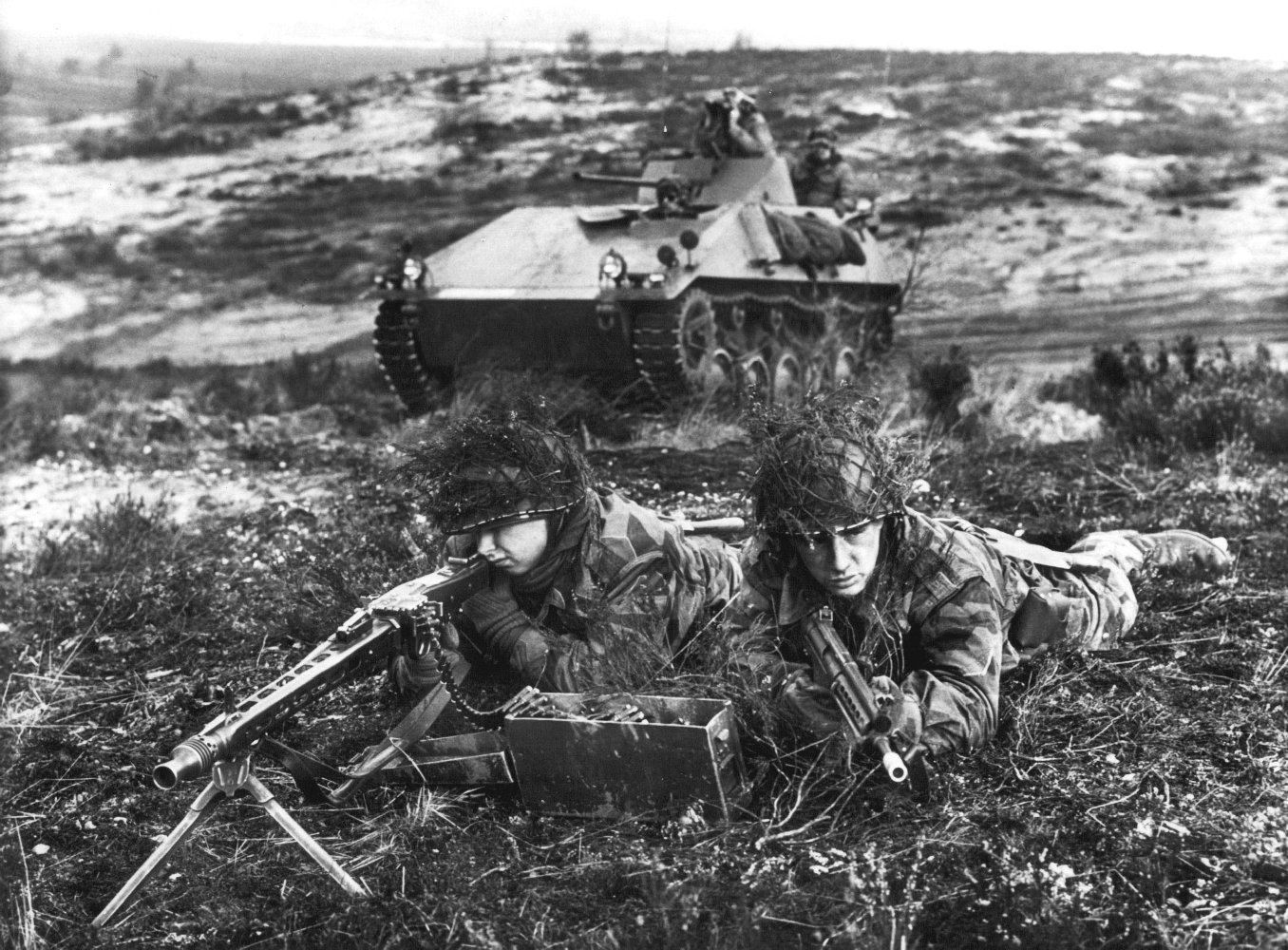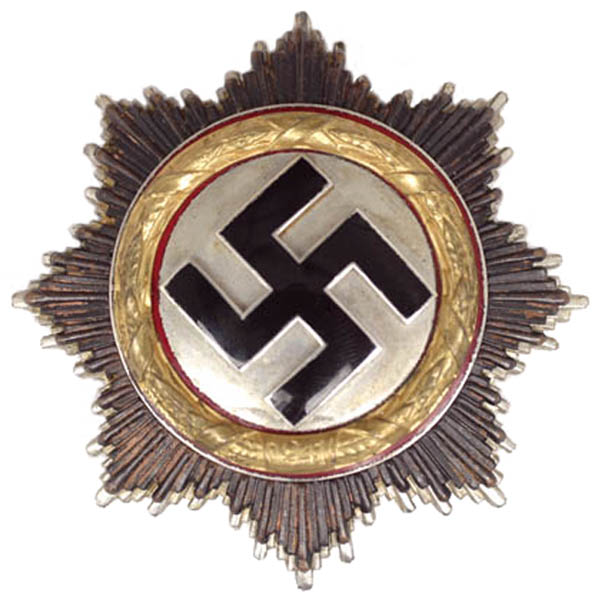|
Werner Ebeling
__NOTOC__ Werner Hermann Karl Ebeling (21 November 1913 – 25 August 2008) was an officer in the Wehrmacht of Nazi Germany during World War II and a general in the Bundeswehr of West Germany. He was a recipient of the Knight's Cross of the Iron Cross with Oak Leaves. He commanded the 11 Panzergrenadier Division of the Bundeswehr from 15 January 1968 to 30 September 1970. Awards and decorations * Iron Cross (1939) 2nd Class (14 June 1940) & 1st Class (5 September 1941)Thomas & Wegmann 2000, p. 127. * Wound Badge in Black (18 March 1944) * Infantry Assault Badge (13 November 1941) * Eastern Front Medal (31 July 1942) * Close Combat Clasp in Bronze (25 February 1944) * Honour Roll Clasp of the Army (27 December 1943) * German Cross in Gold on 11 March 1943 as ''Oberleutnant'' in Grenadier-Regiment 220Patzwall & Scherzer 2001, p. 95. * Knight's Cross of the Iron Cross with Oak Leaves ** Knight's Cross on 9 April 1944 as ''Major'' and commander of the II./Grenadier-Regiment 220 ... [...More Info...] [...Related Items...] OR: [Wikipedia] [Google] [Baidu] |
German Army (Wehrmacht)
The German Army (, 'army') is the land component of the armed forces of Federal Republic of Germany, Germany. The present-day German Army was founded in 1955 as part of the newly formed West German together with the German Navy, ''Marine'' (German Navy) and the German Air Force, ''Luftwaffe'' (German Air Force). , the German Army had a strength of 63,047 soldiers. History Overview A German army equipped, organized, and trained following a single doctrine and permanently unified under one command was created in 1871 during the unification of Germany under the leadership of Prussia. From 1871 to 1919, the title ''German Army (German Empire), Deutsches Heer'' (German Army) was the official name of the German land forces. Following the German defeat in World War I and the end of the German Empire, the main army was dissolved. From 1921 to 1935 the name of the German land forces was the ''Reichswehr, Reichsheer'' (Army of the Realm) and from 1935 to 1945 the name ''German Army (We ... [...More Info...] [...Related Items...] OR: [Wikipedia] [Google] [Baidu] |
Iron Cross
The Iron Cross (, , abbreviated EK) was a military decoration in the Kingdom of Prussia, the German Empire (1871–1918), and Nazi Germany (1933–1945). The design, a black cross pattée with a white or silver outline, was derived from the insignia of the medieval Teutonic Order and borne by its knights from the 13th century. As well as being a military medal, it has also been used as an emblem by the Prussian Army, the Imperial German Army, and the of the Weimar Republic, while the ''Balkenkreuz'' (bar cross) variant was used by the ''Wehrmacht''. The Iron Cross is now the emblem of the , the modern German armed forces. King Frederick William III of Prussia established the Iron Cross award on 17 March 1813 during the Napoleonic Wars (EK 1813). The award was backdated to the birthday (10 March) of his late wife, Louise of Mecklenburg-Strelitz, Queen Louise, who was the first person to receive it (posthumously). The Iron Cross was also awarded during the Franco-Prussian War ( ... [...More Info...] [...Related Items...] OR: [Wikipedia] [Google] [Baidu] |
1913 Births
Events January * January – Joseph Stalin travels to Vienna to research his ''Marxism and the National Question''. This means that, during this month, Stalin, Hitler, Trotsky and Tito are all living in the city. * January 3 – First Balkan War: Greece completes its Battle of Chios (1912), capture of the eastern Aegean island of Chios, as the last Ottoman forces on the island surrender. * January 13 – Edward Carson founds the (first) Ulster Volunteers, Ulster Volunteer Force, by unifying several existing Ulster loyalism, loyalist militias to resist home rule for Ireland. * January 18 – First Balkan War: Battle of Lemnos (1913), Battle of Lemnos – Greek admiral Pavlos Kountouriotis forces the Turkish fleet to retreat to its base within the Dardanelles, from which it will not venture for the rest of the war. * January 23 – 1913 Ottoman coup d'état: Enver Pasha comes to power. February * February 1 – New York City's Grand Central Te ... [...More Info...] [...Related Items...] OR: [Wikipedia] [Google] [Baidu] |
Oskar-Hubert Dennhardt
__NOTOC__ Oskar-Hubert Dennhardt (30 June 1915 – 19 June 2014) was a German Major in the Wehrmacht during World War II. He was a recipient of the Knight's Cross of the Iron Cross with Oak Leaves of Nazi Germany. Dennhardt served in the Landtag of Schleswig-Holstein as a Christian Democratic Union politician after World War II.''Das braune Schleswig-Holstein'' , 26 January 1990 He rejoined the military service in the ... [...More Info...] [...Related Items...] OR: [Wikipedia] [Google] [Baidu] |
Hasso Neitzel
Hasso may refer to: * Hasso von Boehmer (1904–1945), German soldier and part of the 20 July plot to assassinate Hitler * Hasso von Manteuffel (1897–1978), German soldier and liberal politician * Hasso Plattner (born 1944), cofounder of software company SAP AG * Hasso Spode (born 1951), German historian and sociologist * Hasso von Wedel (general) (1898–1961), commander of the Wehrmacht Propaganda Troops during World War II * Hasso von Wedel (aviator) Oberleutnant Bernhard Rudolf Hasso von Wedel (12 May 1893–1945) IC began his career as a World War I flying ace credited with five aerial victories. He served as a fighter pilot during World War II; in the Battle of Britain, after a spell ... (1893–1945), German World War I flying ace {{given name German masculine given names Masculine given names ... [...More Info...] [...Related Items...] OR: [Wikipedia] [Google] [Baidu] |
Great Cross Of Merit Of The Federal Republic Of Germany
The Order of Merit of the Federal Republic of Germany (, or , BVO) is the highest federal decoration of the Federal Republic of Germany. It may be awarded for any field of endeavor. It was created by the first President of the Federal Republic of Germany, Theodor Heuss, on 7 September 1951. Colloquially, the decorations of the different classes of the Order are also known as the Federal Cross of Merit (). It has been awarded to over 262,000 individuals in total, both Germans and foreigners. Since the 1990s, the number of annual awards has declined from over 4,000, first to around 2,500, then from 2015 to under 1,500, with a low of 918 awards in 2022. Since 2013, women have made up a steady 30–35% of recipients.The Order of Merit of the Fe ... [...More Info...] [...Related Items...] OR: [Wikipedia] [Google] [Baidu] |
Major (Germany)
() is the lowest Staff (military), staff Officer (armed forces), officer rank in the German Army, German Air Force. The rank is rated Ranks and insignia of NATO armies officers, OF-3 in NATO. The rank insignia is a silver oakleaf cluster with a silver pip (star). The OF-3 equivalent of the German Navy is the . History The rank in German-speaking armed forces dates back to the Middle Ages. World War II During World War II, the Schutzstaffel, SS equivalent was ''Sturmbannführer''. Current rules To be appointed to the rank of , the officer has to pass a staff officer basic course () which is held at the German Armed Forces Command and Staff College (), and serve in a post coded A13 or A13/A14. In the German Army and the Joint Support Service (), the waiting period between meeting the requirements for promotion and actual promotion to the rank of averages 15 months due to budget problems (as of July 2010). See also * Ranks of the German Bundeswehr * Rank insignia of the G ... [...More Info...] [...Related Items...] OR: [Wikipedia] [Google] [Baidu] |
Oberleutnant
(English: First Lieutenant) is a senior lieutenant Officer (armed forces), officer rank in the German (language), German-speaking armed forces of Germany (Bundeswehr), the Austrian Armed Forces, and the Swiss Armed Forces. In Austria, ''Oberleutnant'' is also a designation for certain positions in the federal police and prison guards. In the former West Germany, it was also a rank in the Federal Border Guard (''Bundesgrenzschutz''). Occupied Austria Germany In the German Army, it dates from the early 19th century. Translated as "first lieutenant", the rank is typically bestowed upon commissioned officers after five to six years of active-duty service. is used by both the German Army and the German Air Force. In the NATO military comparison system, a German is the equivalent of a first lieutenant in the Army/Air Forces of Allied nations. ;Other uses The equivalent naval rank is ''Oberleutnant zur See''. In Nazi Germany, within the SS, Sturmabteilung, SA and Waffen-SS, ... [...More Info...] [...Related Items...] OR: [Wikipedia] [Google] [Baidu] |
German Cross
The War Order of the German Cross (), normally abbreviated to the German Cross or ''Deutsches Kreuz'', was instituted by Adolf Hitler on 28 September 1941. It was awarded in two divisions: in gold for repeated acts of bravery or military leadership; and in silver for distinguished non-combat war service. The German Cross in Gold ranked higher than the Iron Cross First Class but below the Knight's Cross of the Iron Cross, while the German Cross in Silver ranked higher than the War Merit Cross First Class with Swords but below the Knight's Cross of the War Merit Cross with Swords. Eligibility The German Cross was issued in two versions: gold and silver (the color of the laurel wreath around the swastika). The gold version was awarded to military personnel for repeated acts of bravery in combat, or of military leadership, with 6–8 acts as a rule of thumb. The silver version was awarded for multiple distinguished services in the war effort and was considered a continuation of the ... [...More Info...] [...Related Items...] OR: [Wikipedia] [Google] [Baidu] |
Honour Roll Clasp Of The Army
__NOTOC__ The Honour Roll Clasp () was a decoration of Nazi Germany during World War II. There were different versions for the Army ('' Heer''), Air Force (''Luftwaffe'') and Navy (''Kriegsmarine''). History The Honour Roll of the German Army () was first issued in July 1941 after the German invasion of the Soviet Union. The roll recorded the names of soldiers who had distinguished themselves in combat in an exceptional way, and was published in the Army Ordinance Gazette (''Heeres-Verordnungsblatt''). Until 30 January 1944 it was a paper award only. On this date, Adolf Hitler introduced a physical decoration to be worn in uniform by those who appeared on the Honour Roll. A similar Honour Roll of the German Navy (''Ehrentafel der Deutschen Kriegsmarine'') was instituted in February 1943, with a wearable decoration introduced in May 1944. The Honour Roll Clasp of the German Air Force (''Ehrenblatt der Deutschen Luftwaffe'') was instituted on 5 July 1944, with the decoration intro ... [...More Info...] [...Related Items...] OR: [Wikipedia] [Google] [Baidu] |
Close Combat Clasp
The Close Combat Clasp () was a World War II Nazi Germany, German military award instituted on 25 November 1942 for participation in Hand-to-hand combat, hand-to-hand fighting at close quarters. Intended primarily for infantry, other German Army (1935–1945), Heer, Waffen-SS, Luftwaffe ground units and Fallschirmjäger (Paratroopers) were also eligible. Eligibility The award was bestowed in three classes: *Bronze for 15 close combat actions; *Silver for 25 close combat actions; *Gold for 50 close combat actions. Close combat actions were counted from 1 December 1942, with earlier long service on the Eastern Front (World War II), Eastern Front counting towards the award, with 15 continuous months counting as 15 combat days; 12 months as 10 days; and 8 months as 5 days. For those who had received disabling wounds, there was discretion to make the award after 10, 20 and 40 actions. As the war continued, a number of amendments were made to the award criteria: *From 4 August 1944, o ... [...More Info...] [...Related Items...] OR: [Wikipedia] [Google] [Baidu] |



